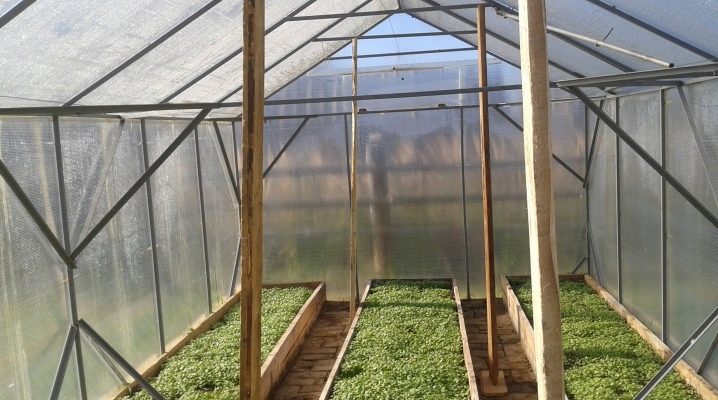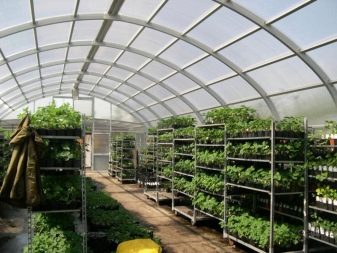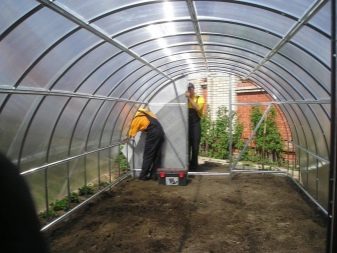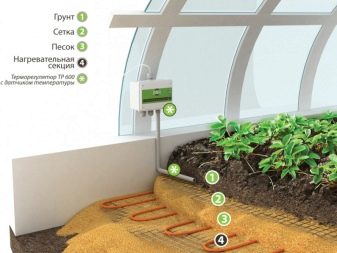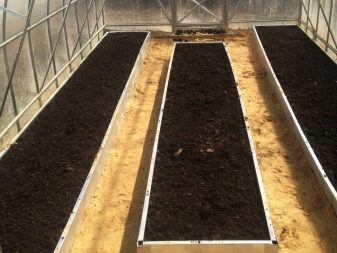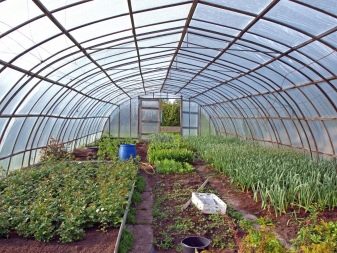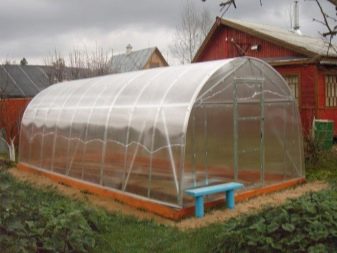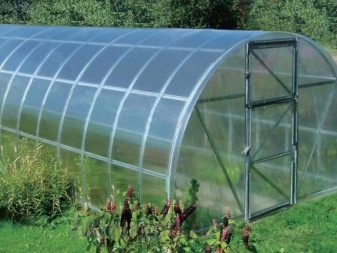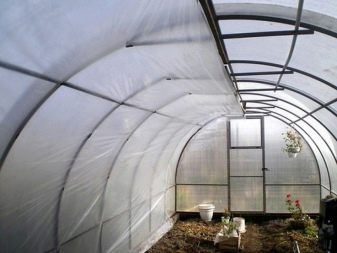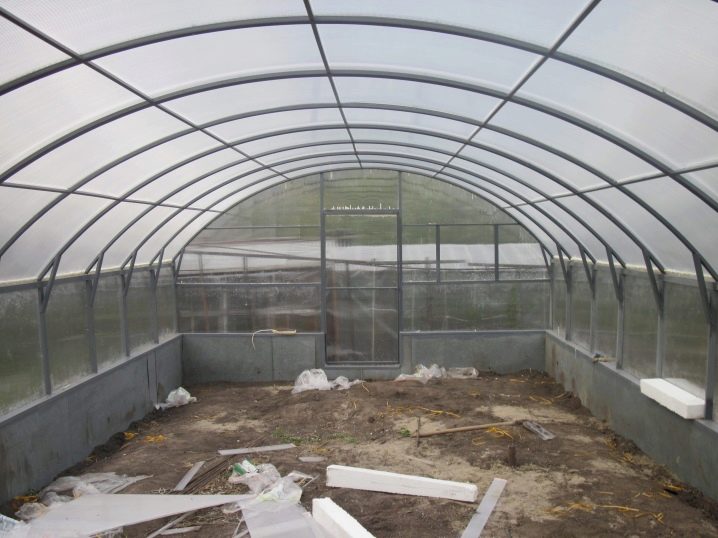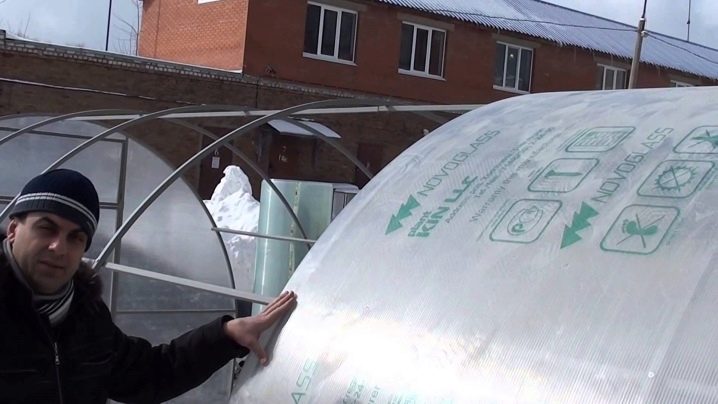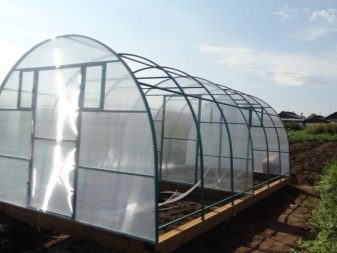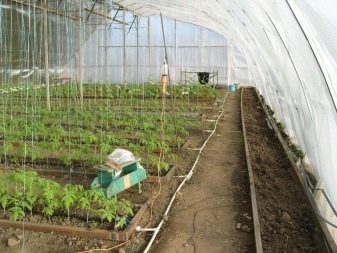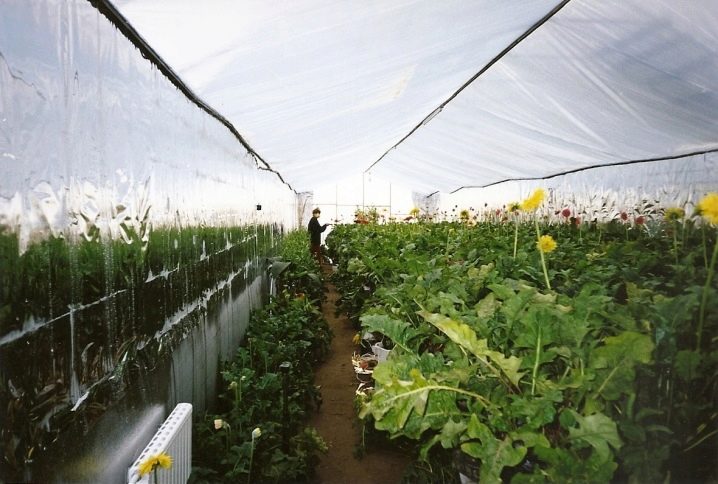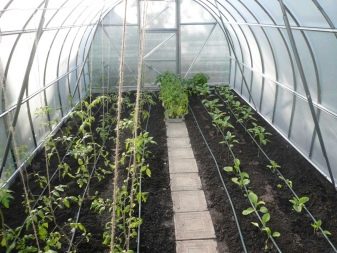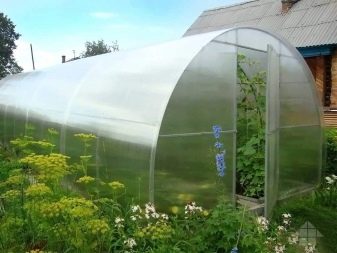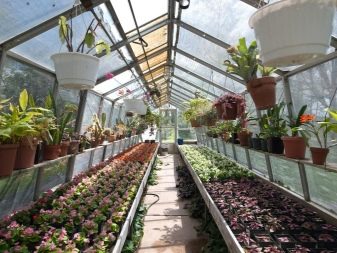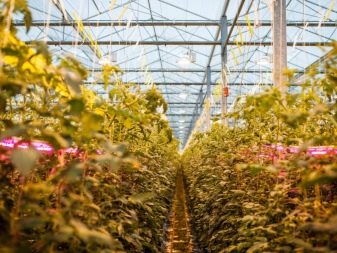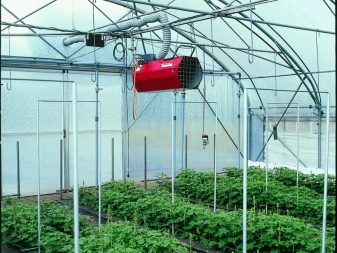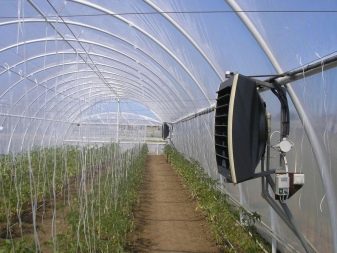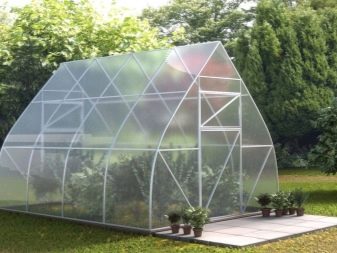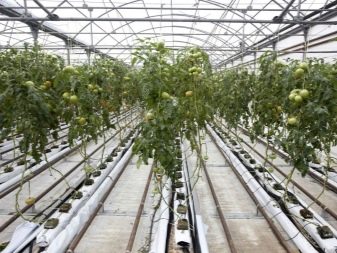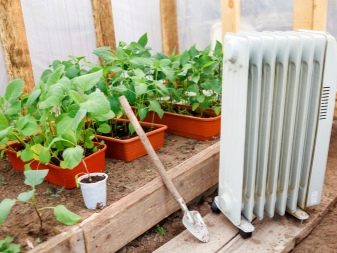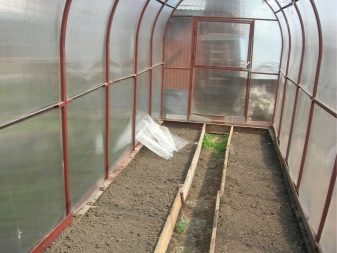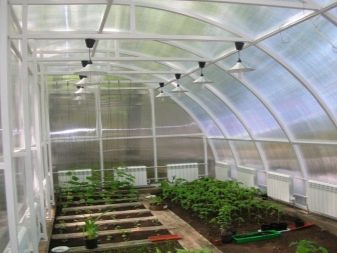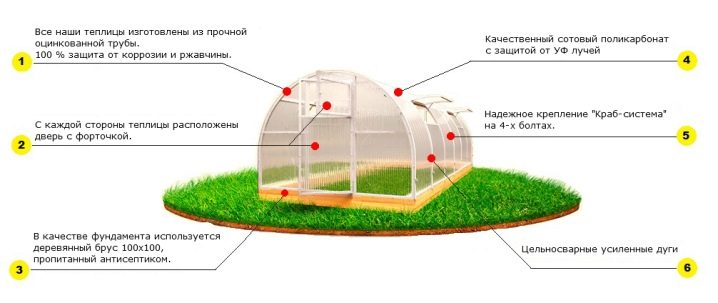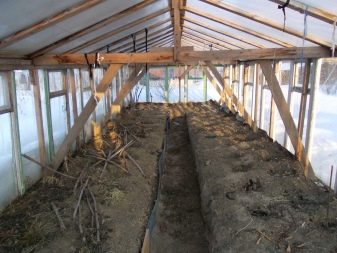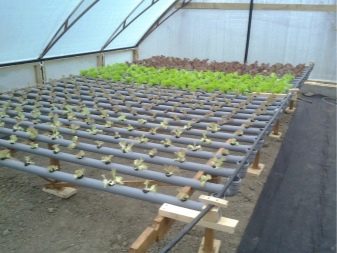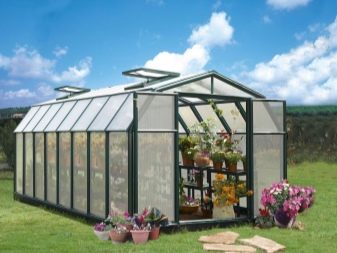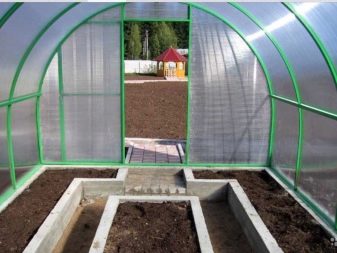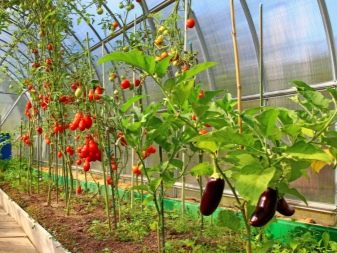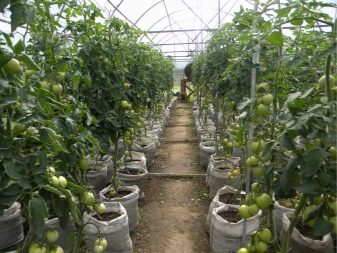How to warm the greenhouse?
To enjoy the home with fresh herbs and fruits all year round, you need to equip a reliable greenhouse. It will not only save money, but also provide an opportunity to get environmentally friendly and safe products directly from the garden. To insulate a greenhouse (greenhouse), not only special equipment is used. There are several ways to create optimal conditions for plants in the winter, as well as in the cold autumn and spring.
Training
The process of insulation is long and difficult. To implement the idea it is necessary to prepare special tools, equipment and finishing materials. It is necessary to protect the plants from the vagaries of weather, climate change and sudden cold spells.In some regions, gardeners and gardeners think through winter warming.
In order to fully use the land in the greenhouse, it is necessary to carry out such a front of work as:
- strengthening of the foundation or its laying, in case there is no greenhouse on the house plot or a greenhouse was assembled on the ground; reliable sealing of the construction joints;
- purchase and use of heating equipment;
- for the development of flora requires an adequate amount of light. This suggests the installation of lighting fixtures in the right amount;
- changes in the layout of the greenhouse (if necessary);
- additional covering with covering material. Thermal insulation of the roof and walls.
Foundation
A standard greenhouse is a light and compact structure. This factor is preserved, even if glass and a metal frame were used in construction. However, for the cultivation of plants from season to season, such finishing is not enough. So that the heat that is collected inside the structure does not go away through the soil, it is necessary to equip the foundation. It will help save precious heat and keep the plant roots from freezing.
Tape type
The arrangement of the strip foundation will help to cope with the problem of the harsh climate. This option is used with insulation. The foundation is placed slightly below the rate of soil freezing. The easiest method is to add solid tape to the overall design. It is the best choice for small greenhouses.
As a heater for the foundation often use polystyrene foam. This material has a number of advantages and positive technological qualities. Experts recommend wrapping the material in polyethylene before use. It will provide additional protection against moisture and moisture.
The second option is foam. It can be used in combination with the above insulation.
Options for the use of insulation for the foundation
Using dense material, you can save the foam, if you place around the perimeter of a special protective screen in half or a quarter of a brick. It will reliably protect the insulation from small rodents.
Another effective method is foam glass. The material has excellent resistance to moisture and perfectly copes with the function of insulation.Its peculiarity lies in the fact that it is absolutely not afraid of rodents, which often become a problem for summer residents and owners of country houses. Experts identify one drawback - it is high cost.
To create more favorable conditions inside the greenhouse, you can attach a block on the south side of the house. Another practical option is to place a greenhouse between stationary, stable walls (provided that the design of the main building allows such an arrangement).
Joints
The full process of converting a greenhouse to the harsh winter season provides for sealing the joints. According to many experts, they become the main cause of heat loss. Through the small openings between the finishing materials used in the construction of the structure, cold air enters inside. Both film and glass greenhouses need sealing.
The presence of joints leads to drafts, which negatively affect the process of fruit ripening. Even if a hydrobarrier was used when creating a calf, an additional procedure for sealing joints is recommended.
What is needed for work?
The modern market offers a huge variety of sealants that are ready for use immediately after purchase. However, most of them do not form a dense coating. The main reason is poor tolerance to the vagaries of the weather and sudden changes in temperature.
Experienced specialists praise mastic (thiokol and polysulfide mixture). They will perfectly go for seal of small seams and cracks. Special components in the composition of mastics allow you to use it in a wide temperature range: from frost to heat. Proper use ensures excellent results. Rubberized pads also perfectly cope with the task. They can be different, with a dense outer layer or have a porous structure. This is an excellent choice for sealing a greenhouse on a metal frame or when working with strip foundations.
Design changes
If the greenhouse is separate from the house, then the platform will need to be equipped. Otherwise, when stationary walls are part of the greenhouse, the construction amendment is impossible. Tambour will help settle sudden changes in temperature, thereby protecting the plants.Regardless of the sustainability of the flora representatives, such drops are destructive for everyone. The entrance to the greenhouse should be located on the south side. Tambour of sufficient size can be used as a department for storing various garden tools and other equipment. You can place in this part a rack or a small cabinet.
Warming of a light-transmitting covering
There are several ways to heat-absorb the coating.
- Film. The use of polyethylene film is the most common and affordable option. This is a low-cost material that can be found at any hardware store. Films are used to coat the structure from the inside. The result is a layering: glass (base), the air gap, film. If necessary, polyethylene can be used for both internal and external cladding.
- Replacement. To insulate a greenhouse made of polycarbonate, you can use similar materials that are similar in technical characteristics. Many use a polycarbonate sheet 4 millimeters thick. This is a practical solution for the inner lining.
Lighting
Do not underestimate the importance of lighting in the cultivation of vegetables, herbs and fruits. Some plants need a large amount of light, others are not so much dependent on this indicator, but also to the light. With the advent of cold weather, daylight becomes significantly shorter. As a result, it is necessary to consider an additional greenhouse lighting system. It is worth noting that the lamp has to be used in the warm season, if the weather is unable to please a clear day.
There are specific conditions for growing plants in greenhouses, namely lighting. A plant needs at least 12 hours of light. These are the optimal conditions for obtaining fruits. For lighting, devices and lamps of various types are used: economical sodium, “warm” lamps, luminescent options. The maximum result can be achieved only with the use of an integrated lighting system.
Additional heating tools
The range of opportunities for owners of greenhouses and greenhouses is huge. With the help of heating equipment, ideal temperature conditions can be easily created inside the structure.Devices of this type can be used both for stationary buildings and for greenhouses attached to the walls of villas or houses.
Autonomy. Gas equipment
Buyers have the opportunity to purchase heating equipment that operates autonomously. Gas is used as a resource. Such devices are designed for installation in stationary greenhouses. To install heating, you need to connect it to a common gas pipeline. This complex process should be carried out exclusively by professionals. In addition, an additional branch needs an appropriate resolution.
If it is not possible to connect the system to a gas pipeline, cylinders can be used, but this is not the most economical and convenient option. Gas quickly ends, and you have to constantly spend time buying new cylinders. As practice shows, one container lasts less than a month.
Electricity
The second option is electric heaters. Such equipment has its pros and cons. The main advantages are safe use, compared to gas heating, simple operation and installation.The disadvantage is to heat the air in a large greenhouse, you will need several devices. Do not forget about the cost of electricity. The use of standard household appliances will not lead to proper results, since they are not designed for use 24 hours a day. The equipment will not cope with a constant load and will quickly become unusable.
Thermal insulation of polycarbonate
Polycarbonate greenhouses are becoming increasingly common. They can be found in various regions of our country. Polycarbonate is durable, reliable, practical and, which is important for many, cost-effective material. It is great for creating greenhouses of various plants. The harsher the climate in a given region, the more seriously it is necessary to treat the process of warming the building. This will help to significantly increase the yield and vegetation period of representatives of the flora.
Sheet polycarbonate, which has become widespread as a material for greenhouses, boasts excellent thermal insulation. This is the first advantage of this finishing material, because the main task of the greenhouse is to create comfortable conditions for the plants and their development.The second thing to note is transparency. The sun's rays pass unhindered through the walls. Do not forget that the light also gives warmth. The material will help save money spent on the use of lighting equipment.
To achieve maximum heat retention, it is recommended to make a choice in favor of the coating of three layers. The design includes two layers of polycarbonate and a layer of air as an addition. The optimum thickness of the outer sheets is about one and a half centimeters, 1.5 cm, and the inner layer - 4 mm. To reduce heat loss, experts recommend using polycarbonate sheets with rubber-type seals.
Foundation
Be sure to pay attention to the bottom of the structure, including the foundation. It is necessary to carry out its laying as well as when working with greenhouses from other materials. Depth should not be less than the depth of soil freezing. At arrangement of base blocks it is necessary to use roofing material, it is laid over the base. Additional insulation is carried out from the inside. In this case, you will need a layer of sand 40 cm and foam.
Greenhouse placement
To save heat inside the greenhouse will help proper location, which will also save the cost of heating and maintenance. There are several rules that should be followed when choosing the location of the greenhouse.
- The sun. Plot illuminated by natural light is the best place to place a greenhouse. Natural light and heat are needed for the harvest.
- Area. In the northern areas, greenhouses should be directed from east to west.
- Shadow. It is necessary to minimize the shading of the structure.
- Block. House, trees and other additional buildings in the yard can be used as protection against wind and drafts.
Additional methods
There are many other ways to insulate a greenhouse.
- Beds Experienced gardeners and gardeners recommend the use of high beds. The optimal rate is 40 centimeters.
- Cable. To warm the ground, you can use a special cable. It is laid along the beds without the use of additional equipment and structures, burying 10 centimeters under the ground. To use the cable need a standard outlet.This is an efficient and cost effective way.
- Water system. It is possible to warm greenhouses safely and effectively with the help of a water heating system. However, this option has two significant drawbacks: the price and complex installation.
If you have the experience and the necessary tools, you can do the warming yourself.
Recommendations
Arranging a greenhouse for use throughout the year is a profitable investment. In the greenhouse you can grow not only ordinary vegetables (cucumbers, tomatoes, zucchini and much more), as well as exotic plants and rare flowers. Year-round buildings will allow you to continuously grow a variety of plants.
The harsher the climate in a particular region, the more time and money will have to be spent on heating greenhouses and growing fruits. After the installation of heating equipment, it is worth carefully monitoring its condition and checking the operability of the devices, especially when it comes to the gas heating system.
To learn how to warm the greenhouse, see the following video.
